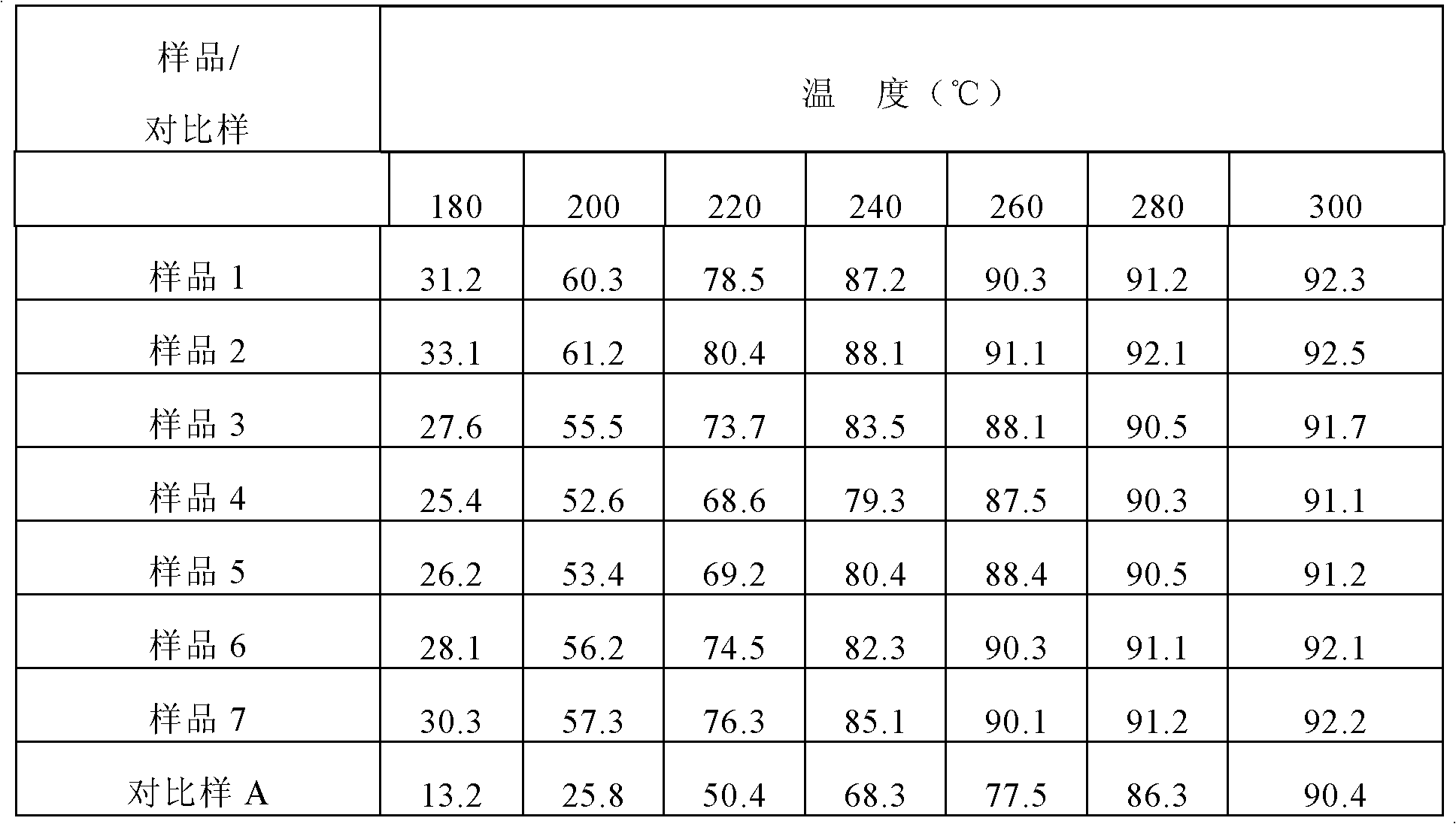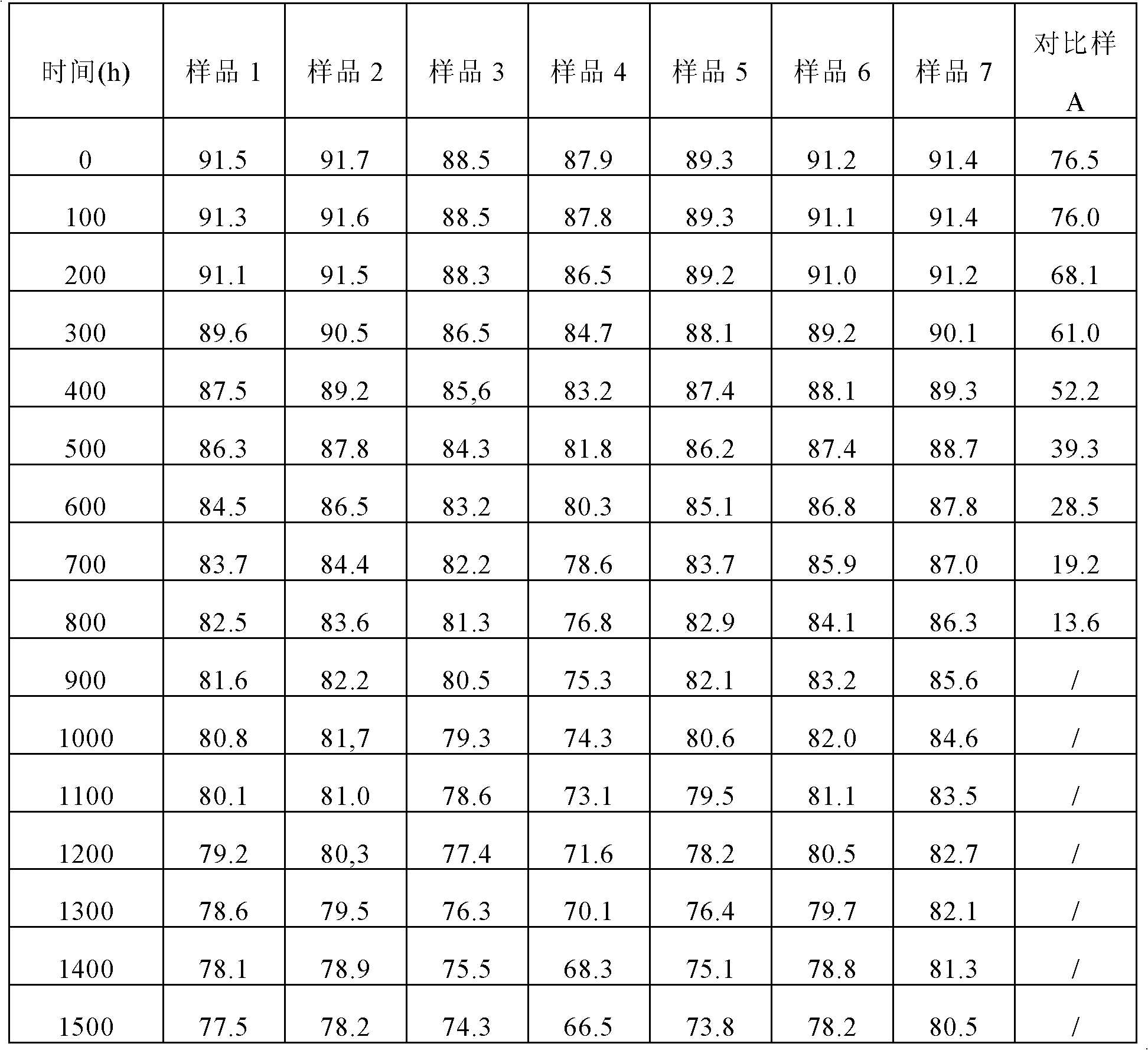Catalyst used for vinyl chloride preparation, its preparation method and application
A catalyst, vinyl chloride technology, used in catalyst activation/preparation, chemical instruments and methods, physical/chemical process catalysts, etc., can solve the problem of weak carrier bonding, coarse catalyst crystals, catalytic effect and catalytic stability. It is difficult to achieve industrial application And other issues
- Summary
- Abstract
- Description
- Claims
- Application Information
AI Technical Summary
Problems solved by technology
Method used
Image
Examples
preparation example Construction
[0027] The preparation method of the catalyst for preparing vinyl chloride provided by the invention comprises the following steps:
[0028] 1) The water-soluble compound of barium, the water-soluble compound of phosphorus and the water-based polymer monomer are mixed with water to prepare solution A or emulsion A;
[0029] In step 1), the water-soluble compound of barium can be selected from barium chloride, etc., and its aqueous solution concentration is 0.3-30% (preferably 1-20%); the water-soluble compound of phosphorus can be selected from phosphoric acid etc., the concentration of its aqueous solution is 0-10% (preferably 0.5-10%); the water-based polymer monomer can be a compound that can be polymerized into a water-based glue, and the compound that can be polymerized into a water-based glue can be selected from acrylic compounds , vinyl ester compound, acrylamide, urea and formaldehyde, phenol and formaldehyde, melamine and formaldehyde, waterborne polyurethane monomer...
Embodiment 1
[0046] Prepare sample 1
[0047] 1. Dissolve 5g of barium chloride, 2g of phosphoric acid and 3g of acrylic acid in 100g of water to make a solution.
[0048] 2. Add 50g of activated carbon into the above solution for soaking, preferably in a vacuum state, so that the solution can fully penetrate into the activated carbon. The soaking temperature is 40°C, and the soaking time is 1h.
[0049]3. Take out the soaked activated carbon and dry it with a centrifuge.
[0050] 4. The dried activated carbon is irradiated with ultraviolet rays to initiate the polymerization of acrylic acid.
[0051] 5. Heat the activated carbon loaded with water-based polymer under the protection of inert gas to dehydrate it and decompose and carbonize the polymer. The temperature is controlled at 400°C.
[0052] 6. Activate the carbonized activated carbon and its load with nitrogen, the activation temperature is 1000°C, and the activation time is 0.5h.
[0053] Sample 1 was prepared by the above ste...
Embodiment 2
[0055] Prepare sample 2
[0056] 1. 10g of barium chloride, 5g of phosphoric acid, 5g of vinyl acetate, 0.1g of sodium alkylbenzenesulfonate and 100g of water are prepared into an emulsion.
[0057] 2. Add 50g of activated carbon into the above emulsion for soaking, preferably in a vacuum state, so that the emulsion can fully penetrate into the activated carbon. The soaking temperature is 60°C, and the soaking time is 5 hours.
[0058] 3. Take out the soaked activated carbon and dry it with a centrifuge.
[0059] 4. Spray 5 g of a solution containing 1% ammonium persulfate and 1% sodium bisulfite onto activated carbon to polymerize vinyl acetate.
[0060] 5. Heat the activated carbon loaded with water-based polymer under the protection of inert gas to dehydrate it and decompose and carbonize the polymer. The temperature is controlled at 500°C.
[0061] 6. Activate the carbonized activated carbon and its load with carbon dioxide gas, the activation temperature is 800°C, and ...
PUM
 Login to View More
Login to View More Abstract
Description
Claims
Application Information
 Login to View More
Login to View More - R&D
- Intellectual Property
- Life Sciences
- Materials
- Tech Scout
- Unparalleled Data Quality
- Higher Quality Content
- 60% Fewer Hallucinations
Browse by: Latest US Patents, China's latest patents, Technical Efficacy Thesaurus, Application Domain, Technology Topic, Popular Technical Reports.
© 2025 PatSnap. All rights reserved.Legal|Privacy policy|Modern Slavery Act Transparency Statement|Sitemap|About US| Contact US: help@patsnap.com


